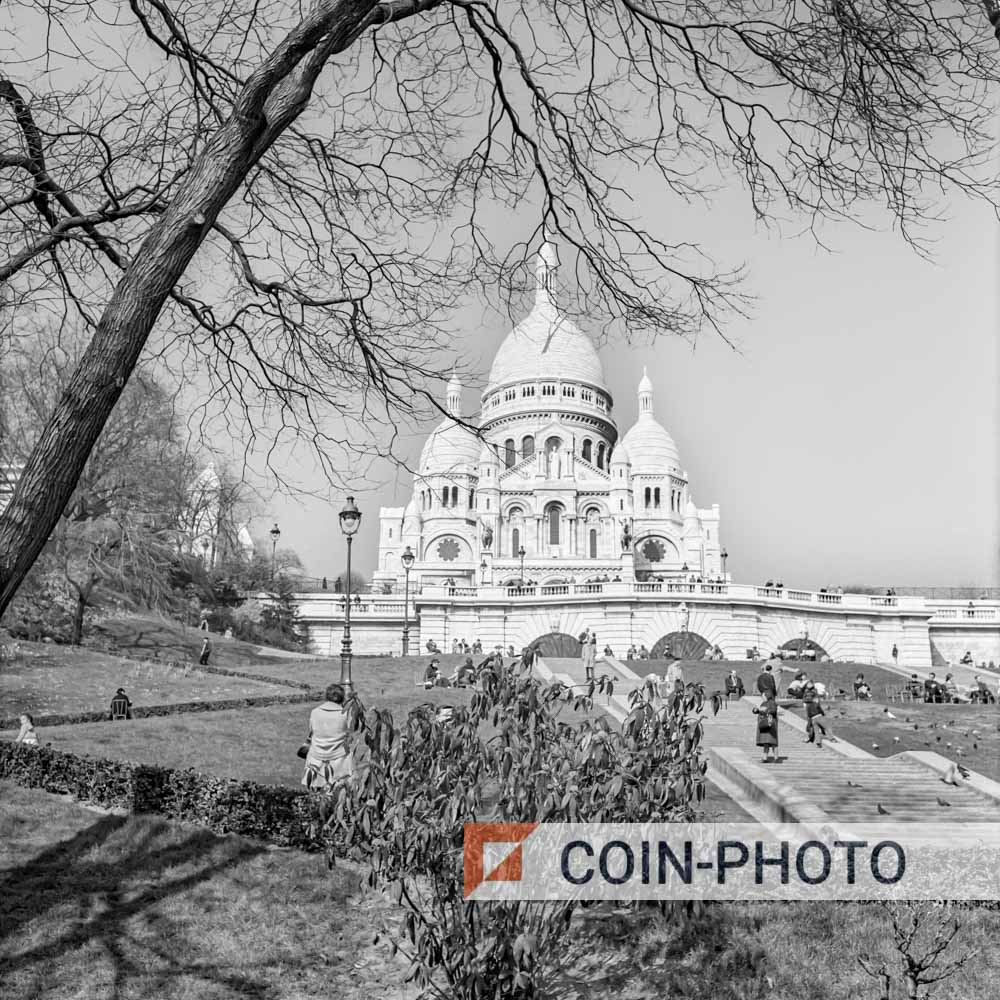Perched atop the highest point of Paris, the Basilica of the Sacred Heart of Montmartre (Basilique du Sacré-Cœur) stands as a magnificent testament to faith, art, and history. Its gleaming white dome and distinctive Romano-Byzantine architecture make it one of the most recognizable and beloved landmarks in the City of Lights. More than just a place of worship, the Sacré-Cœur is a symbol of national penance, artistic expression, and a stunning vantage point offering panoramic views of the sprawling Parisian landscape.
A History Rooted in Tumult and Hope
The story of the Sacré-Cœur is deeply intertwined with the turbulent history of France in the late 19th century. Following the Franco-Prussian War (1870-1871) and the subsequent upheaval of the Paris Commune, a period of deep national introspection and spiritual questioning gripped the nation. Many attributed France’s defeat to moral failings and sought a way to atone for the perceived sins of the nation.
It was in this climate that the idea for the Sacré-Cœur was born. Alexandre Legentil and Hubert Rohault de Fleury, prominent figures in Parisian society, vowed to build a church dedicated to the Sacred Heart of Jesus as an act of national penance and a plea for divine intervention. They believed that such a gesture would help heal the wounds of war, restore moral order, and bring peace to the nation.
Their vision gained momentum, and in 1873, the French National Assembly officially declared the construction of the basilica as a matter of national importance. A competition was held to select the architect, and Paul Abadie’s design, a striking Romano-Byzantine style, was chosen. This choice was deliberate, intended to evoke the grandeur of early Christian architecture and to stand apart from the prevailing Gothic and Neoclassical styles of Paris.
The foundation stone was laid in 1875, marking the beginning of a monumental construction project that would span nearly four decades. The basilica was officially consecrated in 1919, shortly after the end of World War I, fulfilling its initial purpose as a symbol of hope and reconciliation in a nation weary of conflict.
Architectural Marvel: A Fusion of Styles
The Sacré-Cœur is a masterpiece of architectural fusion, blending elements of Romanesque and Byzantine styles to create a unique and awe-inspiring structure.
-
Exterior: The basilica is constructed primarily of Château-Landon stone, a type of travertine that has the remarkable quality of self-cleaning and whitening over time. This gives the Sacré-Cœur its characteristic bright white appearance, making it a beacon visible from afar. The exterior is adorned with four domes, the largest of which rises majestically above the transept, dominating the Parisian skyline. At the top of the dome stands a lantern, offering visitors an even more breathtaking view.
The facade of the basilica features three arches, each adorned with sculptures depicting key figures and events in Christian history. Above the central arch stands a statue of Christ with outstretched arms, symbolizing his love and compassion for humanity. Flanking the entrance are equestrian statues of Saint Louis IX, the crusading king of France, and Joan of Arc, the patron saint of France, representing both earthly and spiritual leadership.
-
Interior: The interior of the Sacré-Cœur is equally impressive, showcasing a harmonious blend of architectural grandeur and artistic detail. The vast nave is bathed in soft, natural light filtering through stained-glass windows, creating a serene and contemplative atmosphere. The walls and ceilings are adorned with intricate mosaics, sculptures, and paintings, depicting scenes from the Bible and the lives of the saints.
One of the most striking features of the interior is the apse mosaic, one of the largest in the world. This colossal artwork depicts Christ in Majesty, surrounded by saints and angels, offering a powerful visual representation of divine glory. The intricate details and vibrant colors of the mosaic are truly captivating, drawing visitors into a realm of spiritual contemplation.
A Sanctuary of Art and Spirituality
Beyond its architectural splendor, the Sacré-Cœur is also a sanctuary of art and spirituality, housing a wealth of artistic treasures and providing a space for prayer and reflection.
-
The Grand Organ: The basilica is home to a magnificent grand organ, built by Aristide Cavaillé-Coll, one of the most renowned organ builders of the 19th century. The organ is celebrated for its rich, resonant sound and its ability to evoke a wide range of emotions. Regular concerts and recitals are held at the Sacré-Cœur, showcasing the organ’s capabilities and enriching the spiritual experience of visitors.
-
The Crypt: Beneath the basilica lies a vast crypt, accessible to visitors. The crypt houses a collection of religious artifacts, including relics of saints, liturgical objects, and historical documents related to the construction of the Sacré-Cœur. The crypt also serves as a place for quiet prayer and contemplation, offering a more intimate and secluded space for spiritual reflection.
-
Perpetual Adoration: The Sacré-Cœur is one of the few churches in the world where perpetual adoration of the Blessed Sacrament takes place. This means that the Eucharist is continuously exposed in the monstrance, and worshipers are invited to come and pray at any time of day or night. The practice of perpetual adoration has been maintained at the Sacré-Cœur since 1885, providing a constant source of spiritual comfort and inspiration for pilgrims from around the world.
Montmartre: A Bohemian Setting
The Sacré-Cœur’s location atop Montmartre, the highest point in Paris, adds to its allure. Montmartre has a rich history as a haven for artists, writers, and intellectuals, attracting a bohemian crowd since the late 19th century. The neighborhood is known for its charming cobblestone streets, picturesque squares, and vibrant artistic atmosphere.
Visitors to the Sacré-Cœur can explore the surrounding streets of Montmartre, discovering hidden gems such as the Place du Tertre, where artists create and sell their works, and the Musée de Montmartre, which showcases the history of the neighborhood and its artistic heritage. The area is also home to numerous cafes, restaurants, and cabarets, offering a taste of Parisian culture and nightlife.
Visiting the Sacré-Cœur: A Journey of Faith and Discovery
Visiting the Sacré-Cœur is an experience that transcends mere sightseeing. It’s a journey of faith, art, and discovery, offering a glimpse into the heart of Parisian history and spirituality.
-
Getting There: The Sacré-Cœur is easily accessible by public transportation. The nearest metro stations are Anvers (Line 2) and Abbesses (Line 12). From Anvers, visitors can take a short walk to the base of Montmartre and then ascend the hill via the funicular or the stairs. From Abbesses, visitors can explore the charming streets of Montmartre before reaching the basilica.
-
Admission: Admission to the Sacré-Cœur is free, but there is a small fee to access the dome and the crypt. The basilica is open to the public every day, and guided tours are available for those who wish to learn more about its history and architecture.
-
Dress Code: As a place of worship, the Sacré-Cœur has a dress code. Visitors are asked to dress respectfully, avoiding revealing clothing and hats.
-
Respectful Conduct: Visitors are also asked to maintain a respectful demeanor inside the basilica, refraining from loud conversations and photography during religious services.
A Lasting Legacy
The Basilique du Sacré-Cœur de Montmartre continues to inspire and captivate visitors from around the world. Its stunning architecture, rich history, and spiritual significance make it a truly special place. Whether you are a devout Christian, an art enthusiast, or simply a traveler seeking to experience the beauty of Paris, a visit to the Sacré-Cœur is an unforgettable experience that will leave you with a sense of wonder and awe.

